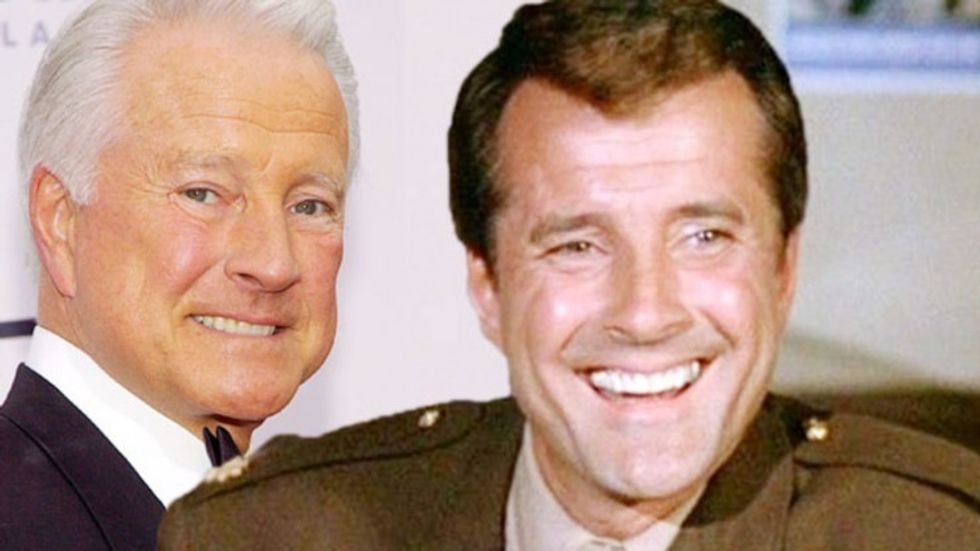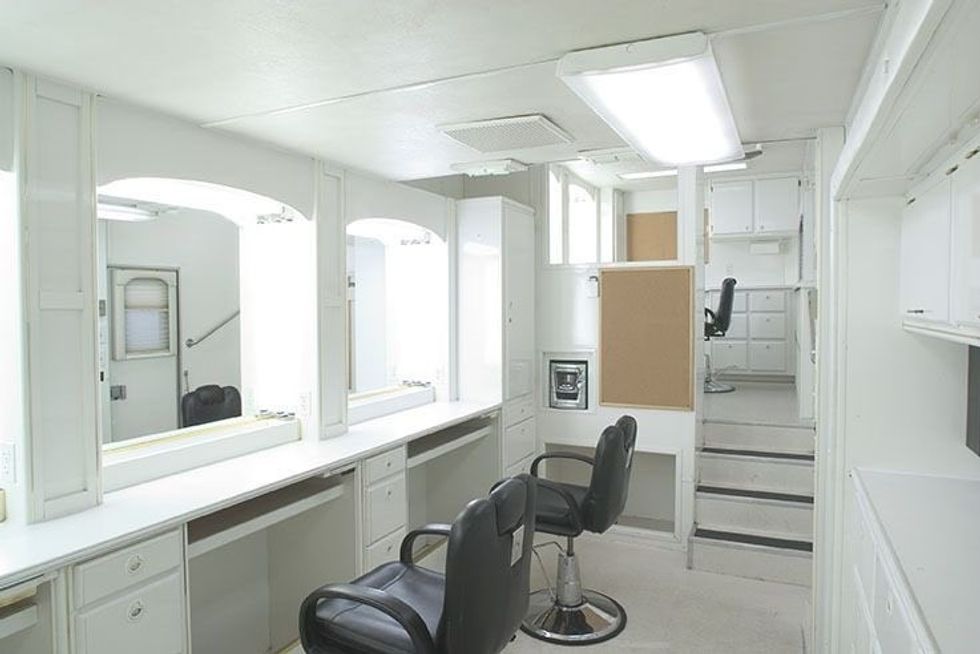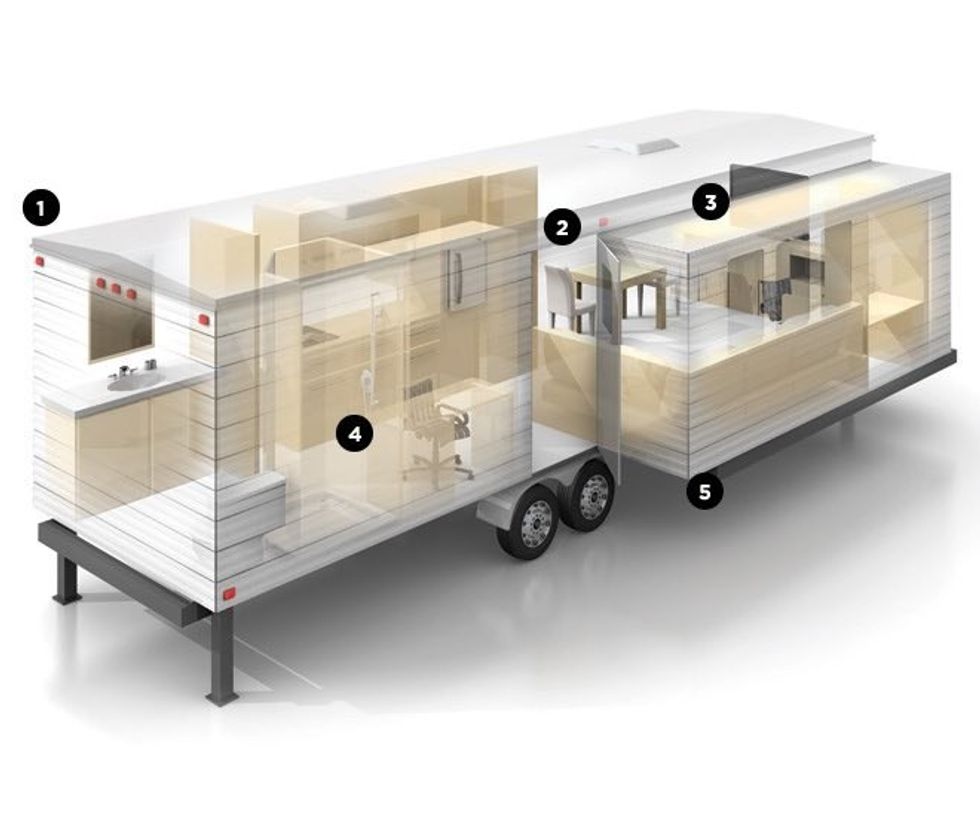Number Two: “I'm gonna give you a film if you bring it up at a dinner party, people are gonna be impressed.” This is a very prescient observation of how rich people operate: they love bragging at dinner parties. That clout-chasing leads directly into point three for Schrader…
Number Three: “I'm gonna put you on a red carpet in Venice, Cannes, or Berlin. You've made a lot of money selling tires, wouldn't you rather spend some money trying to do this?” Having written some of Martin Scorsese’s greatest films (Taxi Driver, Raging Bull) and directed many of his own, Schrader can safely assure that a new film of his will secure a buzzy opening at one of these premier film festivals.
 Richard Gere and Uma Thurman in 'Oh, Canada' via Kino Lorber
Richard Gere and Uma Thurman in 'Oh, Canada' via Kino Lorber
Schrader has been making independently financed films using this equity financing approach for over a decade now. It kicked off with 2013’s The Canyons, which was a slightly different experiment in film financing. Back then, Schrader said to novelist Bret Easton Ellis: “The economics of film are such that we could probably just make a film ourselves. You, Braxton [Pope], and I each have put in $80,000. We could make this film.” The trio would also raise an additional $159,000 via Kickstarter for the project, an uncommon platform for known quantities to use at the time. The erotic thriller went on to star Lindsay Lohan and porn star James Deen.
Schrader describes The Canyons “as a test to see whether it was possible.” While it was indeed possible, Schrader says he “would never do it again—it's a lot of work.” The real takeaway was the realization of the speeds at which you could shoot utilizing new technology: digital cameras, LED lighting—it was all “so much faster” and cheaper. This gave Schrader “the courage to write First Reformed,” he says. “I would have never written that because I knew the only way you could make it was in 19 or 20 days. I did The Canyons and realized I could do this in 19 days.”
Schrader’s latest, Oh, Canada, was shot in only 17 days and reunited him with Richard Gere 44 years after American Giglio kicked both of their careers into full swing. American Giglio was Schrader’s third feature as director and was shot in around 45 days. The paradox of his new working method is that “you’re getting as much raw footage at 17 [days] as you used to get in 45,” he says.
Coverage is primarily what you lose when you choose to make a feature in 17 days and Schrader has no problem with this. If you do a dolly shot, you don’t get the luxury of the master shot as well. What you shoot is what ends up on screen. “You shoot very economically. There are no setups in this film that were not used. There's nothing on the cutting floor,” Schrader says. This leads to a straightforward edit, a process that happens concurrently with shooting. “When the editor gets it, he doesn't say, ‘How should I cut this?’ He realizes there is only one, maybe two ways you can cut this because you've shot the cuts,” Schrader adds.
Rehearsals are also critical to lean shooting. “You can't make a 17-day film without a week of rehearsal,” Schrader says. Bringing the cinematographer into the fold here allows for every shot to be blocked and shot-listed prior to shooting during this rehearsal.
Schrader’s films often include narration, and Oh, Canada is no different. On set, he might tell Gere to say four thoughts in his head, and then speak the fifth thought aloud. Schrader had previously timed this same narration with a stopwatch so he knew exactly how long to linger on a shot, whether on Gere’s silent face or a sweeping dolly move so that the narration would end just as the characters begin speaking on screen.
 Uma Thurman in 'Oh, Canada'via Kino Lorber
Uma Thurman in 'Oh, Canada'via Kino Lorber
Schrader acknowledges that his experience in the film industry is what allowed him to pivot to such a lean filmmaking mode, and still get the desired results. First Reformed, was shot in a similar number of limited days for a small budget and earned Schrader his first-ever Academy Award nomination.
Is Schrader at all nostalgic for the old days, when studio funding meant the luxury of time? If a sequence wasn’t working you had the luxury to sit with your department heads and figure it out, to make sure you get it right, to even experiment on set? “Not really. It's all so time-consuming. Doing a reverse master… You just decide, we're not gonna do a reverse master. I don't miss waiting forever for the lights to go up. I like the pace of it.”
In the old days, you might get your first lighting setup at 11 a.m., right before lunch. “Now you come in and get your first set up at 8:15 a.m., 8:30 a.m. They're literally working twice as fast. The lighting, they don't hang gels anymore. We just put up some panels, and then re-light through an iPad,” Schrader explains.
Trailers are an established perk of long, well-funded shoots and Schrader doesn’t miss that luxury either. “I don't miss taking naps in my trailer,” he says frankly. Actors don’t miss it either, mostly because “trailer time is not creative time. Everything stops when you go into your trailer.” he explains.
“Actors like it better. They like to work, and if you're moving really at a good clip, they'll just hang around the set. You find a room or a chair for them.”
Oh, Canada is now playing in theaters in Los Angeles and New York.





 Richard Gere and Uma Thurman in 'Oh, Canada' via Kino Lorber
Richard Gere and Uma Thurman in 'Oh, Canada' via Kino Lorber  Uma Thurman in 'Oh, Canada'via Kino Lorber
Uma Thurman in 'Oh, Canada'via Kino Lorber 









